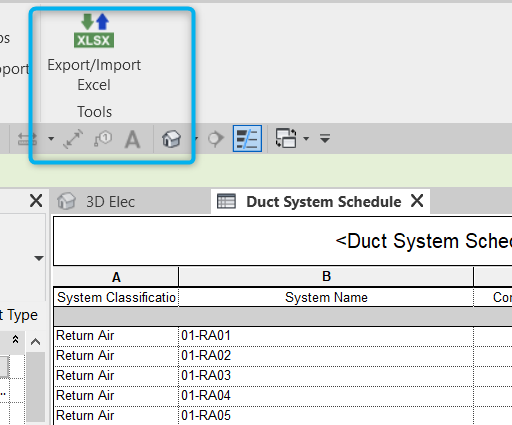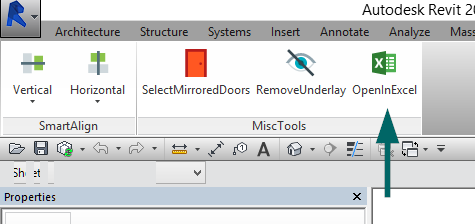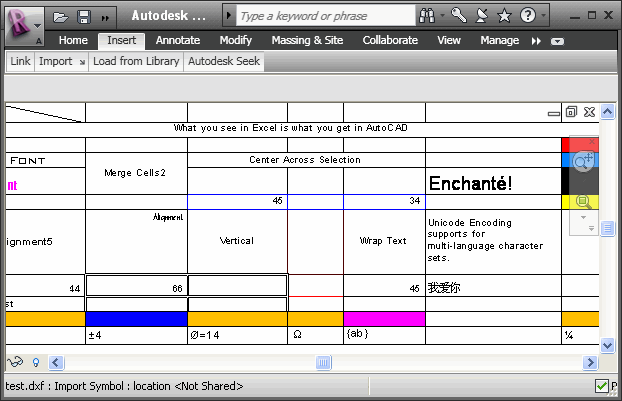Revit Tool Option for Streamlined Modeling and Style
Wiki Article
Understanding the Art of Information Integration: How to Seamlessly Import Excel Files Into Revit
Are you having a hard time to import Excel documents right into Revit smoothly? Look no more! In this write-up, we will certainly guide you through the process of grasping the art of data assimilation. Discover the value of seamless integration in Revit and explore the Excel data layout for Revit assimilation. Prepare to prepare your Excel data effortlessly and follow our step-by-step overview to import documents right into Revit. With our ideal practices, you'll achieve data assimilation success quickly. Allow's start!Recognizing the Importance of Data Integration in Revit
Recognizing the value of data combination in Revit is essential for seamless importing of Excel documents. When you integrate information from Excel into Revit, it permits you to effectively update and manage information throughout the whole task. This assimilation ensures that your layout and construction process is current and accurate.By incorporating data, you can easily import and update parameters, schedules, and also geometry in Revit. This eliminates the demand for hands-on information entrance, saving you time and minimizing the threat of mistakes. With Revit's information combination capacities, you can preserve uniformity and accuracy in your project, while additionally boosting partnership among team participants.

Checking Out the Excel Documents Style for Revit Assimilation

In order to efficiently integrate Excel documents right into Revit, it is crucial to make sure that the information is formatted properly. This consists of effectively classifying rows and columns, as well as structuring the information in such a way that is suitable with Revit's data schema. Revit utilizes specific criteria and categories to organize information, so it is vital to line up the Excel information with these parameters to make sure a seamless integration.
In addition, it is important to note that Revit only sustains particular data kinds when importing from Excel. These consist of message, numbers, and dates. Any kind of other data kinds, such as formulas or conditional format, will not be identified by Revit and might cause issues throughout the assimilation process.
Preparing Your Excel Data for Seamless Import Into Revit
To make certain a smooth integration procedure, you'll require to effectively layout and tag the columns and rows in your Excel data prior to importing it into Revit. This action is vital because it enables Revit to properly translate and arrange your information. Start by analyzing your Excel information and recognizing which columns and rows have appropriate information for your Revit project. Make sure to classify each column with a clear and descriptive header. This will assist you and others conveniently recognize the purpose of each column and prevent complication throughout the import process.Following, ensure that the information in each column is properly formatted. If you have a column for dimensions, make certain that all dimensions are constantly formatted in the exact same units of dimension. Revit depends on regular format to precisely translate and import data.
In addition, it is necessary to look for any vacant cells or inconsistencies in your data. Revit might not have the ability to review or import data from cells that are empty or have mistakes. Consequently, it is suggested to review your Excel information and tidy up any incongruities prior to importing it into Revit.
Step-By-Step Overview to Importing Excel Info Into Revit
When you have actually correctly formatted and classified your Excel data, you can conveniently import it into Revit by following this detailed guide. To begin, open Revit and navigate to the "Insert" tab. Click "Import CAD" and pick "Import Excel" from the dropdown food selection. A brand-new home window will show up, asking you to locate the Excel file you intend to import. Search your computer and select the Excel file, then click "Open."Following, a dialog box will certainly show up, enabling you to customize the import setups. Right here, you can select the worksheet you wish to import, specify the range of cells to import, and select the appropriate systems for your information. Once you've made your selections, click "OK" to continue.
Revit will now present a preview of your Excel data. Take a moment to ensure and review the sneak peek that everything looks correct. If required, you can make adjustments to the import setups by clicking the "Settings" button.
Finest Practices for Information Integration Success in Revit
Make certain you comply with these finest methods to make sure effective integration of data in Revit. It is vital to organize your information in Excel before importing it into Revit. Be mindful of visit site the units and data types when mapping the information, as any discrepancies can lead to errors in the integration procedure.Another essential method is to routinely verify and upgrade your information. As your project proceeds, it is crucial to keep your Excel file approximately day with any type of adjustments made in Revit. This will certainly aid preserve the accuracy and consistency of your data throughout both systems. Furthermore, make use of information recognition tools within Revit to determine any type of errors or variances in the incorporated information.
Last but not least, it is suggested to establish a clear workflow for data assimilation. This includes defining duties and responsibilities, establishing a communication channel in between group participants, and establishing a routine cadence for information updates and testimonials. By complying with these finest methods, you can guarantee a smooth and successful combination of information in Revit, ultimately enhancing the efficiency and precision of your task.
Final Thought
To conclude, grasping the art of information combination is important for smooth import of Excel submits find out this here into Revit. Recognizing the relevance of information assimilation in Revit is the initial step towards successful combination. Exploring the Excel data layout for Revit integration aids in recognizing the restrictions and demands. Preparing the Excel data effectively and adhering to a detailed overview is necessary for a smooth import process. By complying with best methods, you can make certain data assimilation success in Revit and make one of the most out of your job.When importing information from Excel into Revit, it is crucial to comprehend the documents format and just look at this site how it can impact the assimilation process (import excel into revit). Revit utilizes details parameters and classifications to organize data, so it is vital to align the Excel data with these parameters to ensure a smooth combination
Be conscious of the data and devices types when mapping the information, as any disparities can lead to mistakes in the integration process.
In addition, make use of data validation devices within Revit to recognize any type of mistakes or variances in the integrated information.

Report this wiki page